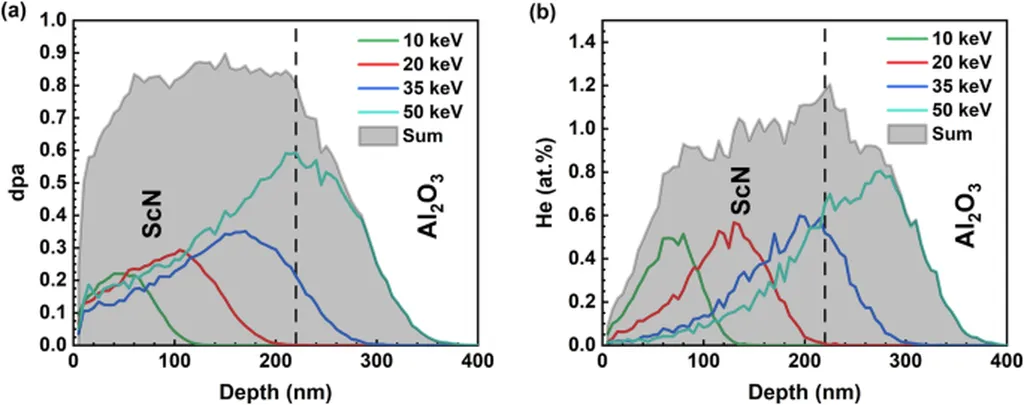In a significant stride toward enhancing thermoelectric efficiency, researchers from the Institute of Physics of the Czech Academy of Sciences have unveiled a novel approach that could revolutionize energy conversion technologies. The study, led by Joris More-Chevalier, focuses on the thermoelectric properties of scandium nitride (ScN)-based multilayers, offering promising insights for the energy sector.
Thermoelectric materials, which convert heat into electricity, hold immense potential for waste heat recovery and sustainable energy solutions. However, their efficiency has been a persistent challenge. The research team tackled this issue by exploring the impact of niobium (Nb) diffusion-driven doping in ScN/Sc1-xNbxN multilayers.
By varying the doped layer thicknesses, the scientists created samples with differing Nb atomic percentages, ranging from 0.4% to 4.8%. Structural characterization confirmed the epitaxial growth of these multilayers, ensuring sharp interfaces crucial for optimal performance. Raman spectroscopy revealed intriguing phonon dynamics, with optical phonon modes shifting in response to Nb concentration and temperature variations.
The most compelling findings emerged from thermoelectric measurements. The Seebeck coefficient, a measure of a material’s ability to convert a temperature difference into an electrical voltage, increased significantly with Nb doping. Simultaneously, thermal conductivity decreased, a dual improvement that boosts overall efficiency.
“The combination of increased Seebeck coefficient and decreased thermal conductivity is a game-changer,” said More-Chevalier. “This approach could pave the way for more efficient thermoelectric devices, making waste heat recovery more viable and contributing to a more sustainable energy future.”
The figure of merit (ZT), a key indicator of thermoelectric performance, potentially surpassed 0.3 in these experiments. While this value is still below the threshold for widespread commercial applications, the study demonstrates a clear path for further optimization.
“This research is a stepping stone,” More-Chevalier explained. “By fine-tuning the doping levels and multilayer structures, we can strive for even higher ZT values, bringing us closer to practical, large-scale implementations.”
The findings, published in the journal “Applied Surface Science Advances” (translated from Czech as “Advances in Applied Surface Science”), open new avenues for exploration in thermoelectric materials. As the energy sector seeks innovative solutions to enhance efficiency and reduce waste, this study offers a promising direction for future developments.
The implications of this research extend beyond immediate applications. By understanding the intricate interplay between doping, phonon dynamics, and thermoelectric properties, scientists can design materials tailored for specific energy conversion needs. This could lead to advancements in various industries, from automotive and aerospace to electronics and renewable energy.
As the world grapples with the challenges of climate change and energy sustainability, breakthroughs in thermoelectric technology are more crucial than ever. The work of More-Chevalier and his team represents a significant step forward, inspiring further research and collaboration in this vital field.

